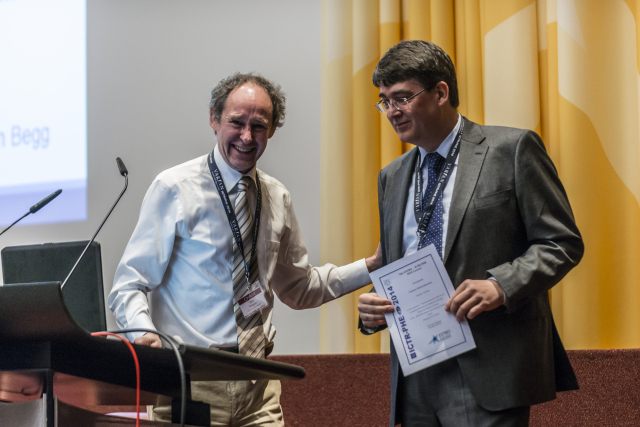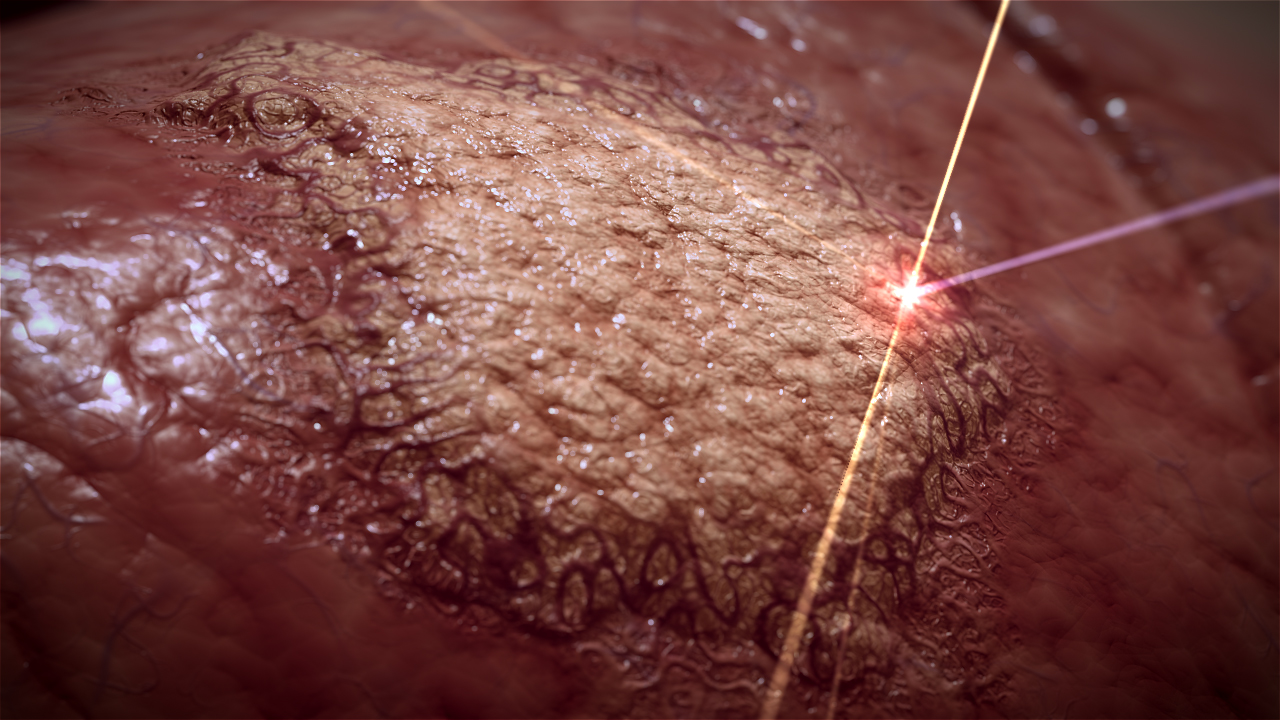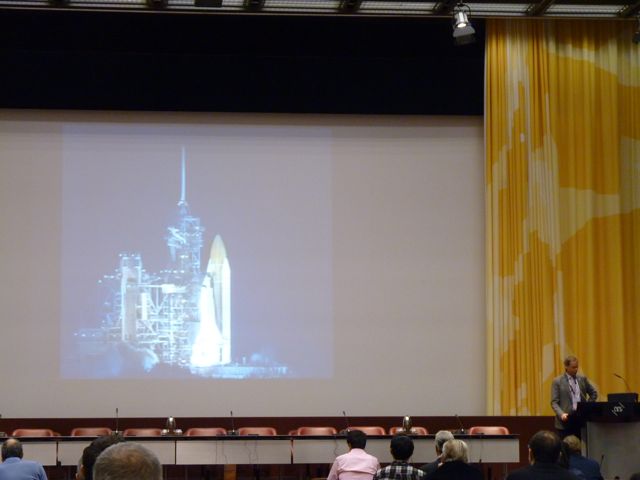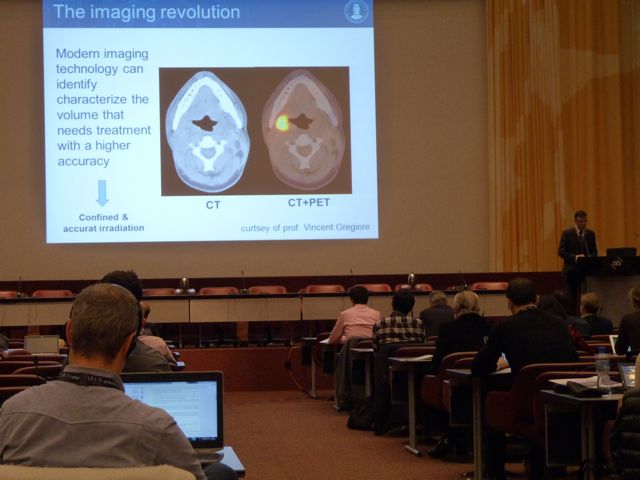
The ICTR-PHE 2014 Blog
| Monday | Tuesday | Wednesday | Thursday | Friday |
There was a buzz in the air this morning, as the third day of the conference started: at ICTR-PHE, Wednesday morning is reserved for key plenary talks on frontier subjects, which are meant to be appealing to all the participants, no matter their field of expertise. Michael Baumann opened the session speaking of the latest trend in Radiation Oncology: personalise treatment, in order to deliver the right dose, to the right patient. This is a critical shift. Medicine has developed over the years protocols based on clinical trials, which showed their efficacy in a significant but selectively chosen number of cases. The idea that lies underneath the use of tailored protocols is to understand those differences that characterise each tumour, its intrinsic heterogeneity, as well as the micro-environmental peculiarities that are apt to affect the therapy outcome.

Michael Baumann, here with Jean Bourhis, gave the ESTRO Lecture, funded by the European Society for Therapeutic Radiology and Oncology.
Considering the micro-environment, small modifications of some molecule or receptor concentration can be detected and used for screening and for therapeutic planning, in order to deliver the right amount of dose according to the characteristics of each mass. Moreover, receptors expressed on the surface of the cancer cells can give important information for the classification of the patient, and can be considered a target to hit. Areas of hypoxia should also be taken into account. In some tumours, the presence of hypoxia is indicative of a resistant phenotype. If this is the case, higher doses are required. In other cases, hypoxia can indicate the resistance only of sub-volumes of the mass. In this case, only those sub-volumes should be hit harder.

Tumour location, as well as modifications in shape and volume, are additional issues that oncologists must take into consideration before starting a treatment, and have to be properly evaluated before and during the treatment. A “theragnostic approach” has to be considered. “Radioteraphy is today already highly individualized,” concluded Baumann, “in terms of clinical, anatomical, model-based features, but biological-driven approaches offer significant potential for further personalization. Yet, validation is still needed. Every idea has to be tested and preclinical and clinical tests have to be performed.” It means also that a joint translational effort among different professionals from different field is needed.



